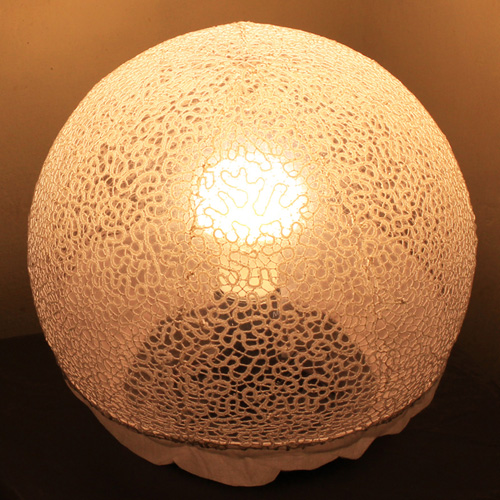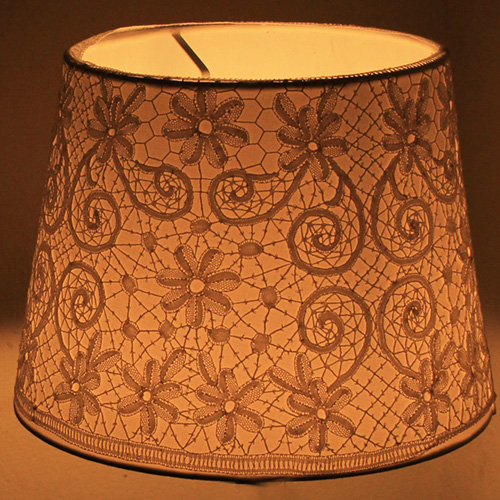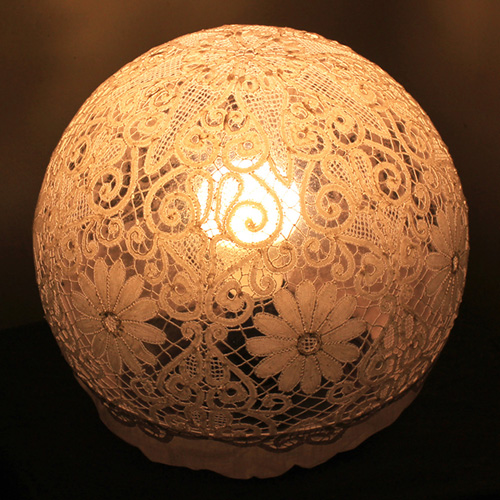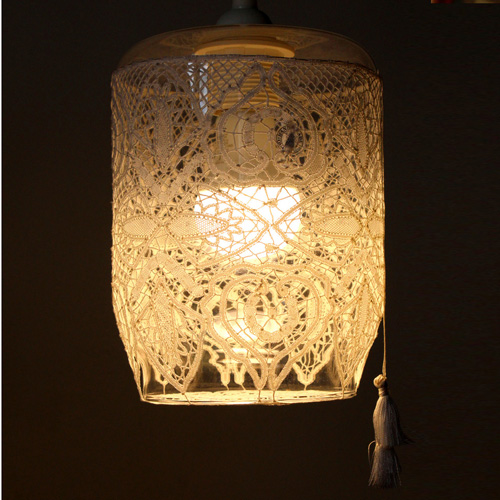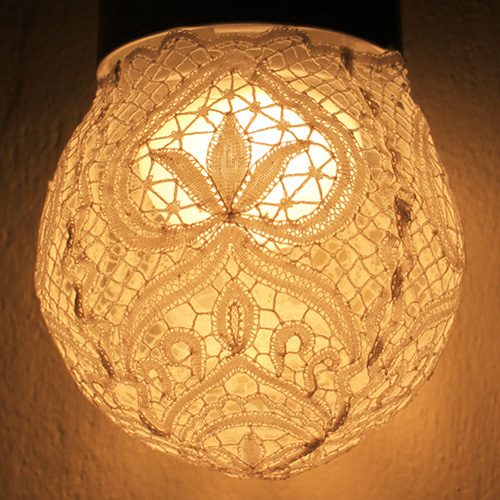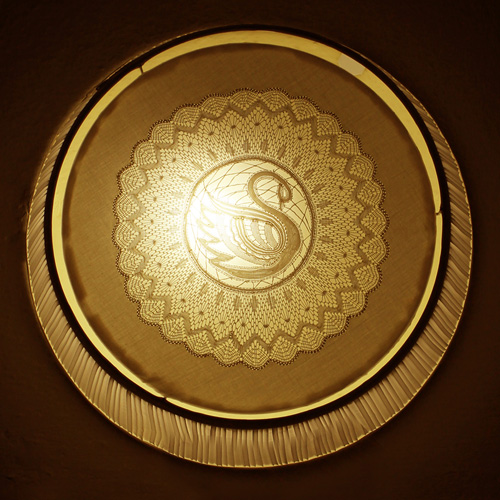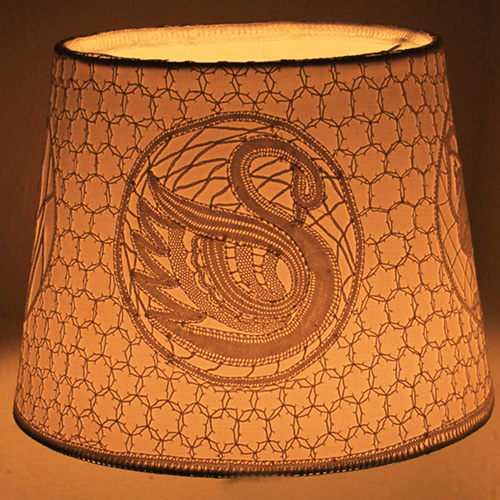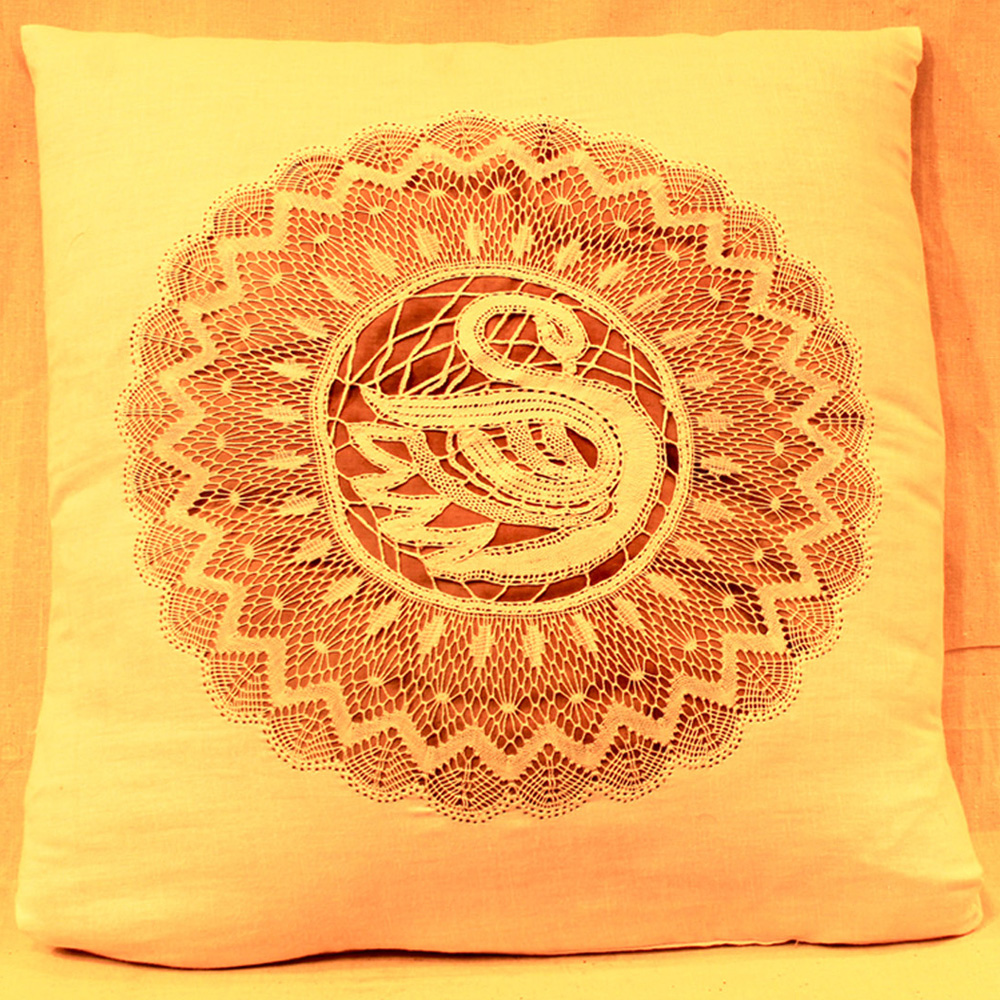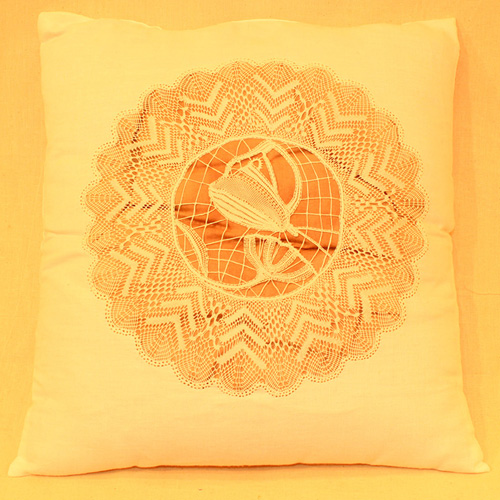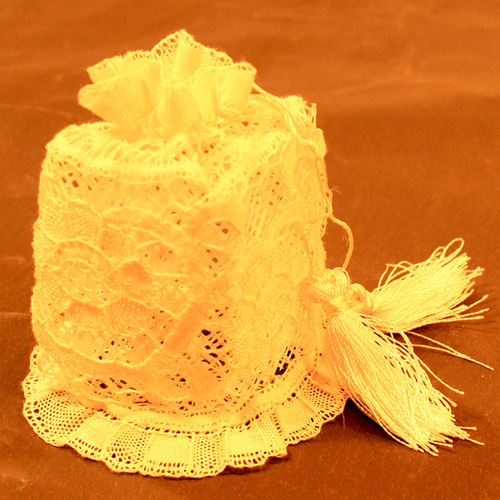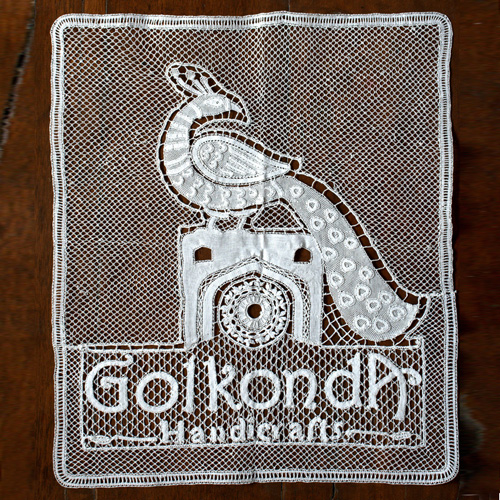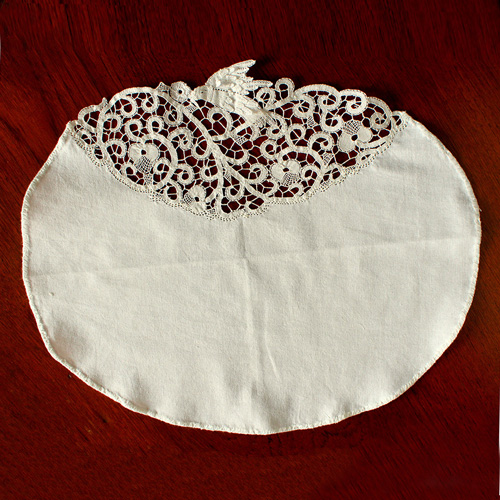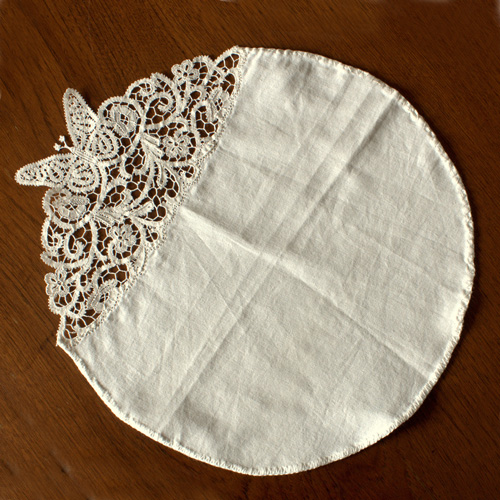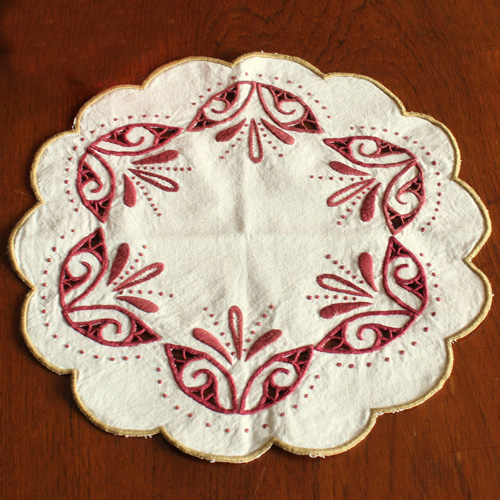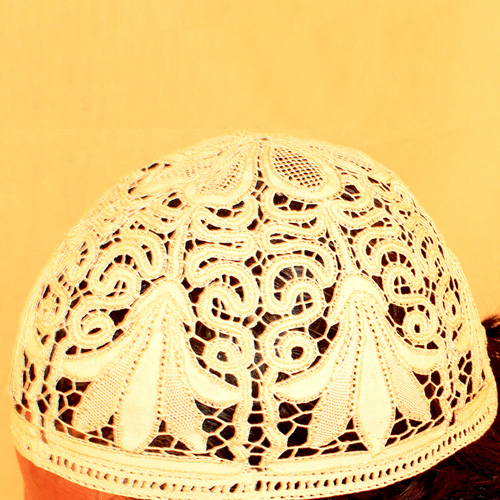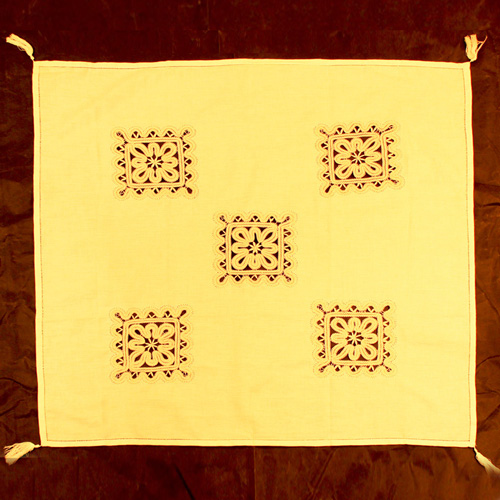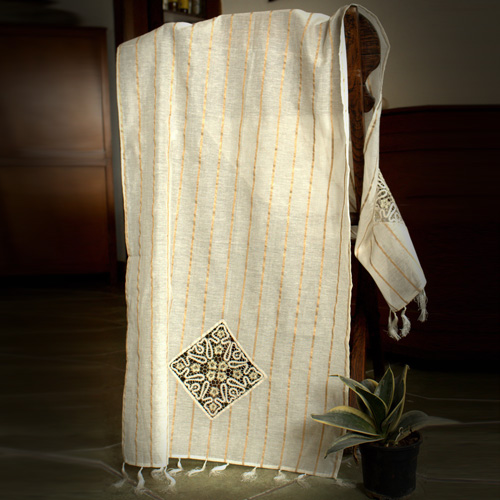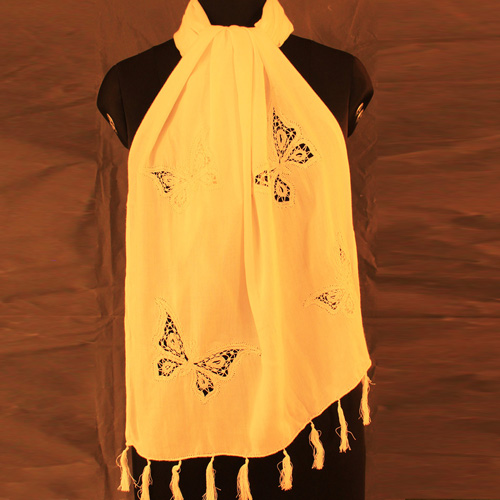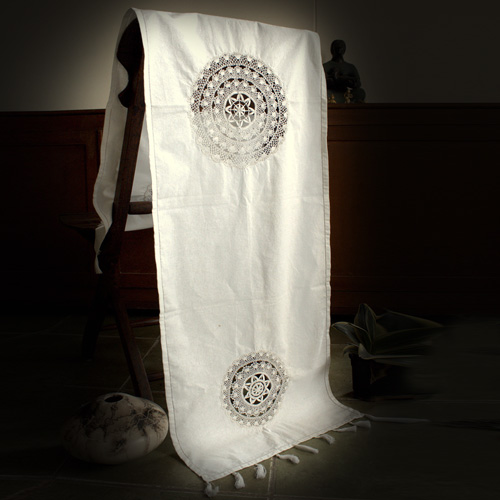Bobbin lace is a Lace textile and is worked with many threads, each wound onto a separate bobbin. The pattern (pricking) of pin holes is marked on a stiff card and is fastened to a firm pillow. This was traditionally packed with straw, but nowadays polystyrene (Styrofoam) is generally used. The threads are fixed at the start of the pattern, although more can be added or even removed as the work progresses. All the stitches involve two pairs of bobbins i.e. four threads. Once the stitches have been made, they are held in position with pins pushed through the pin holes in the pricking into the pillow.
The pattern motifs, which can be outlined with a gimp (a thicker threads) are usually worked in cloth stitch (forming areas resembling woven cloth) or half stitch (giving a more open effect) although more elaborate filling stitches are also used.
Bobbin laces can be worked in three different ways. In straight laces, the motifs and ground of meshes or bars are made in one continuous process, which sometimes requires the use of large numbers of bobbins. In part laces the motifs are made separately and then joined with bars or a mesh ground; this is a method which allows several lacemakers to work on one piece. In braid laces, a braid worked with relatively few pairs meanders across the pattern with the curves linked by sewing’s or bars. Once the lace is finished it is released from the pillow by removing the pins.
The Bobbin lace is an ancient craftwhich originated in Europe. It was introduced to other parts of the world by Christian missionaries whose vestments were decorated with lace.Lace was used as decorative edging and soon replaced embroidery as it was detachable and it could transform dresses to follow different styles of fashion.
A lace fabric is lightweight, delicate with openwork and is made with simple tools – threads wound on bobbins, pins and a tightly stuffed cushion. Pin lace of Bobbin lace of Kazipet is a surface made by intertwining threads and forming chains with the help of pins. Lace making was introduced to Kazipet by Father Colombo 70 years ago through a missionary as an occupational craft for women and he not only introduced lace craft, but also Peepal leaf painting, cross stitch and hand embroidery. He has trained these crafts in 25 villages, particularly in Mallakpally region where it is practiced widely. The artisans make the products and supply to the Church incharge and they received their payments on the same day.
